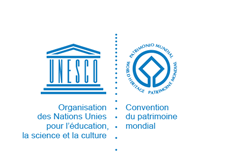City of Granada and its natural environment
Instituto Nicaraguense de Cultura / Municipality of Granada
Avertissement
Les Listes indicatives des États parties sont publiées par le Centre du patrimoine mondial sur son site Internet et/ou dans les documents de travail afin de garantir la transparence et un accès aux informations et de faciliter l'harmonisation des Listes indicatives au niveau régional et sur le plan thématique.
Le contenu de chaque Liste indicative relève de la responsabilité exclusive de l'État partie concerné. La publication des Listes indicatives ne saurait être interprétée comme exprimant une prise de position de la part du Comité du patrimoine mondial, du Centre du patrimoine mondial ou du Secrétariat de l'UNESCO concernant le statut juridique d'un pays, d'un territoire, d'une ville, d'une zone ou de leurs frontières.
Les noms des biens figurent dans la langue dans laquelle les États parties les ont soumis.
Description
The City of Granada is one of the most ancient cities founded by the Spaniards in the New World and the oldest in dry land that remains in its original location. It was founded in 1524 and constituted one of the principal cities of the colonial era and of the XIX century in Central America. It is located at the North-western edge of the Nicaragua Lake, surrounded by an exceptional natural environment consisting of isles, archipelagos, woodlands, volcanoes, lakes and lagoons that have exercised an important influence on its historic evolution and converted this site in one of the most extraordinary natural-cultural scenic backdrops in the world. It is situated at 45 kilometres southeast from the city of Managua, the capital of Nicaragua. It is the capital of the Department of the same name and has a population of 85,000. It is a lake-port city fronting Lake Nicaragua as well as an important tourist, commercial and industrial centre. The city assembles under its urban built-up area and surroundings a series of valuable buildings and properties representative of the history and evolution of American art of the XVI to the XIX centuries. The existing pre-Hispanic vestiges in its surroundings, which date back at least to the IX century A.D., should also be mentioned. Following the founding Hispanic model in America, the city was built at the edge of the indigenous settlement of Xalteva that belongs to the Chorotega culture (IX to XVI centuries A.D.) The city witnessed important historical events of the colonial era, amongst which should be mentioned its having served as a base for the conquest and colonisation of part of the territory of Central America during the XVI century, particularly of the present Republic of Costa Rica. It constituted an important port-city with an active commerce with other cities of Hispanic America, this being the cause for numerous attacks from English, French and Dutch pirates of the period. During the XIX century it was involved in the "Transit Route", a canal route between the Atlantic and Pacific oceans before the construction of the Panama Canal. The present historic centre of the city covers 105 hectares, with a population of 7,500, and contains some 376 buildings and public spaces of great patrimonial value. Today it benefits from the protection and survey by the Oficina del Centro Historico de Granada (attached to the Municipality) and by the Direcci6n del Patrimonio Cultural of the Instituto Nicaraguense de Cultura. This Historic Centre is representative of the colonial Hispanic architecture predominant in Central America from the XVI to the XVIII centuries and of the neo-classic style of the XIX century, both harmoniously coexisting in the central urban area of the city, which has been preserved until the present day. Its natural environment determined its historical evolution and characteristics as urban centre and determined its projection into the future through its rational use and its tourism. It is constituted by a series of natural properties close to the city among which can be mentioned the Apoyo volcanic lagoon, located to the west; the Volcan Mombacho Natural Reserve (1,400 m), home to some endemic butterflies and reptile species, situated to the south, and the Archipielagos de las Isletas y de Zapatera National Parks, the latter situated in the waters of the Nicaragua Lake to the east and southeast. The city and its natural environment are situated at the shores of Lake Nicaragua or Cocibolca. It covers 8,264 square km, making it one of the greatest fresh water deposits in the world and one of the few spots in the planet where marine species have adapted to fresh water. Among others, these are the Fresh Water Shark (Carcharhinus nicaraguenses o Carcharinus leucas), Pez Sierra (Pristis pecnitatus and P. perotteti), Gaspar (Atractosteus tropicus and A.spatula), Robalo (Centropomus parallelus), Guapotes (Cichlasome managuensis o nicaraguenses), Sabalo real (Tarpon atlantiaus), all of them species in danger of extinction. In the mentioned natural environment there exist many important cultural properties related to the history of the city and its population. Among them stand out the network of military defense structures built during the XVIII century against attacks by pirate and rival forces, as well as the architectural and sculptural vestiges of the chorotega culture disseminated over the archipelagos close to the city. These natural and cultural properties are under the protection of and undergoing studies by the Ministry of Environment and Natural Resources, the Municipality of Granada and the Nicaragua Institute of Culture.


 Nicaragua
Nicaragua